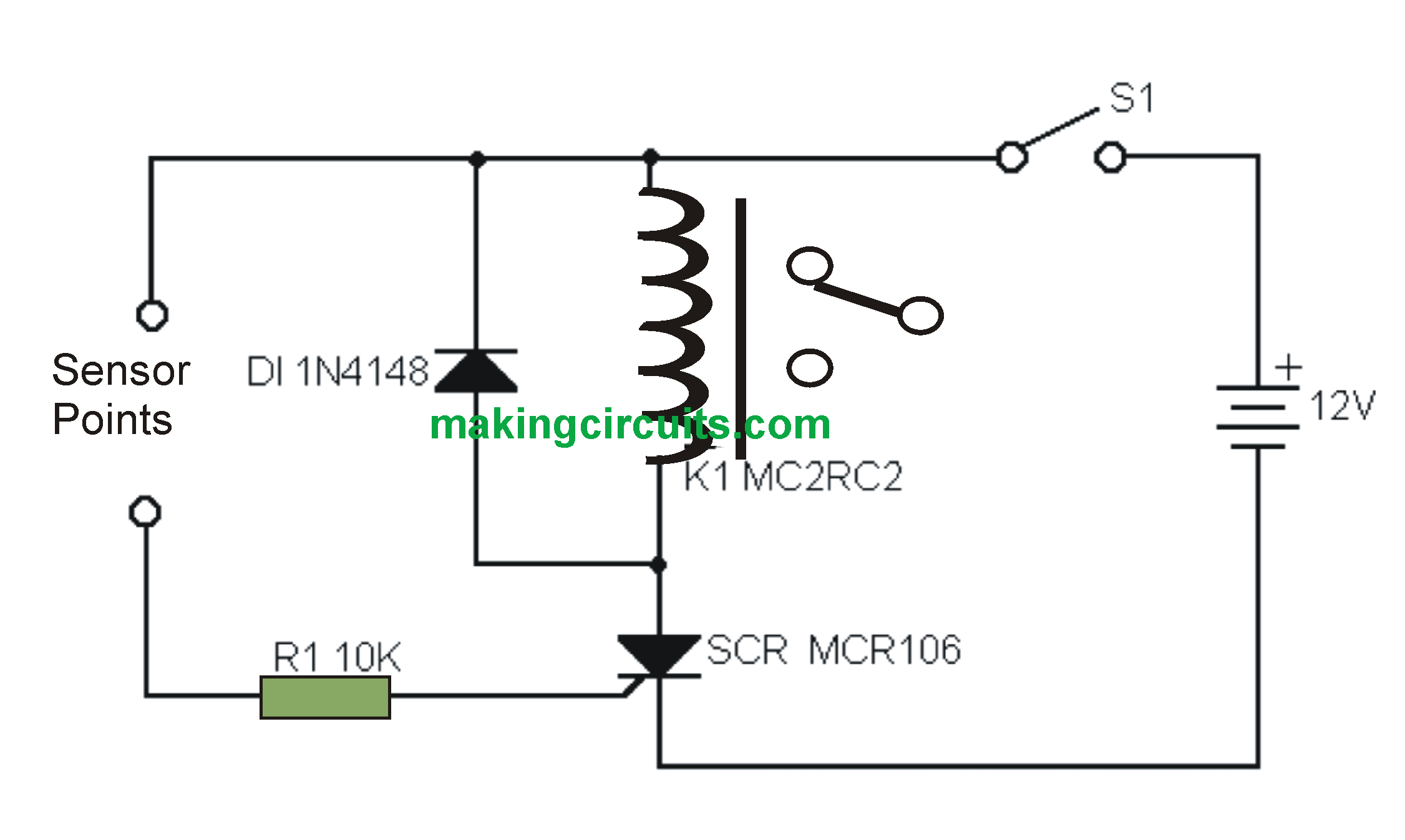The water level controller circuit explained here uses just a couple of parts including a single SCR for implementing the sensing as well as controlling water levels. The circuit can also be used as a rain alarm circuit.
By using this circuit we can now perform the activation of a warning process each time the shown sensor points becomes wet or even just moistened.

In order to activate with rain or perhaps with liquid leaks the sensor which is made up of a couple of metal components separated with a part of tissue or porous cardstock having a bit of salt mixture. Following activation of the alarm through moisture or liquid, the sensor has to be reverted to a dry condition, just before resetting it for the next cycle.
For liquid or water level activation and control, the sensor should consist of two bits of wires together with the tips peeled and split up with a distance of a couple of centimeters.
Comments
Any way to use a 9 volt battery and a very loud buzzer